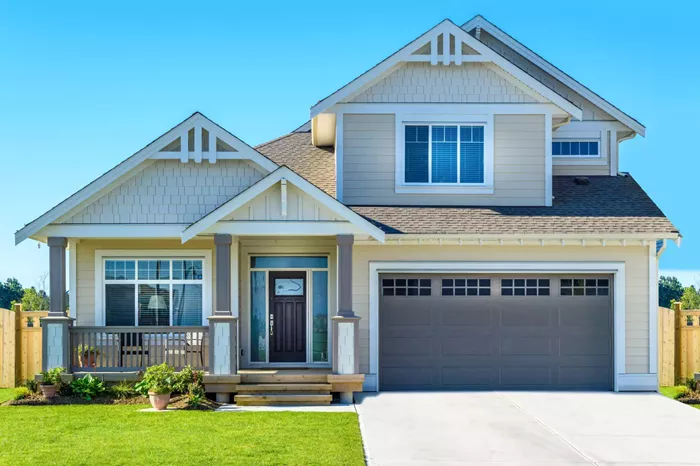Home insurance is a critical element in safeguarding your property and personal belongings from unexpected events. An essential part of this insurance is the annual premium, which determines how much you will pay each year for coverage. This article will provide an in-depth exploration of what an annual premium for home insurance is, how it is calculated, and what factors influence it. We will also offer tips on managing and potentially reducing your premium, along with insights into different policy types and their impacts.
Definition of Annual Premium
An annual premium for home insurance is the total amount of money you pay to your insurance provider each year to keep your home insurance policy active. This payment ensures that your coverage remains in force, protecting your home and belongings against various risks. The premium is calculated based on multiple factors and can vary widely depending on individual circumstances.
Factors Influencing the Annual Premium
Several factors contribute to the determination of your annual home insurance premium. Understanding these factors can help you better manage your insurance costs.
Property Characteristics
Location
Geographic Area: The location of your home plays a significant role in your premium calculation. Properties situated in areas prone to natural disasters, such as floods, earthquakes, or hurricanes, generally have higher premiums due to the increased risk of damage.
Crime Rate: Homes in neighborhoods with high crime rates may face higher premiums due to the increased likelihood of theft or vandalism.
Home Value
Replacement Cost: The replacement cost of your home, or how much it would cost to rebuild it in the event of a total loss, affects your premium. More expensive homes or those with higher replacement costs usually have higher premiums.
Market Value: While the market value of your home influences your premium, it is not the only factor. Insurers primarily consider the cost to replace your home rather than its market value.
Construction Materials
Building Materials: Homes built with durable and fire-resistant materials, such as brick or concrete, may have lower premiums compared to those built with less resilient materials like wood.
Roofing: The type and condition of your roof can also impact your premium. Modern, well-maintained roofs are generally less risky and can lead to lower premiums.
Safety Features
Security Systems: The installation of security systems, including alarms and surveillance cameras, can reduce your premium by lowering the risk of theft and vandalism.
Fire Protection: Homes equipped with fire alarms, sprinkler systems, and fire extinguishers are considered less risky, potentially leading to lower premiums.
Personal Factors
Credit Score
Impact on Premium: Insurance providers often use your credit score as a factor in determining your premium. A higher credit score may qualify you for lower premiums, while a lower score could result in higher costs.
Improving Credit: Maintaining a good credit score by paying bills on time and managing debt responsibly can help reduce your premium.
Claims History
Previous Claims: Your history of filing claims can influence your premium. Frequent claims may indicate higher risk and result in increased premiums.
Claims-Free Discounts: On the other hand, a history of no claims may qualify you for discounts and lower premiums.
Deductibles
Higher Deductibles: Opting for a higher deductible can lower your annual premium. However, this means you will need to pay more out-of-pocket before your insurance coverage kicks in.
Affordability: Ensure that you can afford the higher deductible in the event of a claim to avoid financial strain.
Types of Home Insurance Policies
Different types of home insurance policies offer varying levels of coverage and can affect your annual premium. Understanding these types can help you choose the right policy for your needs.
HO-1: Basic Form
Coverage: This policy offers limited coverage against specific perils such as fire, lightning, and windstorm. Due to its restricted coverage, HO-1 policies generally have lower premiums.
Limitations: HO-1 policies are less common and often insufficient for comprehensive home protection.
HO-2: Broad Form
Coverage: HO-2 policies provide broader coverage than HO-1, including additional perils such as falling objects, accidental water damage, and damage from weight of snow or ice.
Premium Impact: The increased coverage typically results in higher premiums compared to HO-1 policies.
HO-3: Special Form
Coverage: HO-3 policies are the most common type of home insurance. They offer extensive coverage against a wide range of perils, except those specifically excluded, such as earthquakes or floods.
Comprehensive Protection: Due to the broad protection provided, HO-3 policies generally have higher premiums.
HO-5: Comprehensive Form
Coverage: HO-5 policies offer the most comprehensive coverage available, protecting against nearly all perils except those specifically excluded in the policy.
Premiums: The extensive coverage results in higher premiums compared to other policy types.
See Also: What Is Vacant Home Insurance?
How to Calculate Your Annual Premium
Calculating your annual premium involves several steps and considerations. Here is a detailed process to help you understand how your premium is determined.
Step 1: Assess Property Value
Replacement Cost Assessment: Determine the cost to replace your home and its contents in case of a total loss. This includes factors such as building materials, home size, and local construction costs.
Professional Appraisal: Consider getting a professional appraisal to accurately assess the replacement cost of your property.
Step 2: Evaluate Risk Factors
Risk Assessment: Assess risk factors associated with your property, including its location, safety features, and construction materials. Insurers use this information to evaluate the level of risk and adjust your premium accordingly.
Local Risks: Consider local risks such as flood zones or crime rates that might affect your premium.
Step 3: Determine Coverage Needs
Coverage Limits: Decide on the amount of coverage needed based on your property value and personal requirements. Higher coverage limits generally result in higher premiums.
Additional Coverage: Consider additional coverage options, such as for valuable items or high-risk perils, which can also affect your premium.
Step 4: Apply Discounts
Discount Opportunities: Many insurers offer discounts for various factors, such as bundling multiple policies, installing security systems, or maintaining a claims-free history.
Discount Application: Apply for applicable discounts to lower your annual premium and reduce your overall insurance costs.
Tips for Managing and Reducing Your Annual Premium
Managing and reducing your annual premium can help you save money while maintaining adequate coverage. Here are some strategies to consider:
Shop Around
Compare Quotes: Obtain quotes from multiple insurance providers to find the best rate for your coverage needs. Different insurers may offer varying premiums for similar coverage.
Review Annually: Regularly review your insurance policy and shop around to ensure you are getting the best rate.
Increase Your Deductible
Higher Deductible Benefits: Consider increasing your deductible to lower your premium. This means you will pay more out-of-pocket before your insurance coverage begins.
Affordability Check: Ensure you can comfortably afford the higher deductible in the event of a claim to avoid financial strain.
Bundle Policies
Policy Bundling: Many insurers offer discounts for bundling home insurance with other policies, such as auto insurance. Bundling can result in significant savings on your annual premium.
Provider Discounts: Check with your insurance provider to see if they offer discounts for bundling multiple policies.
Improve Home Safety
Safety Enhancements: Enhance the safety of your home by installing security systems, smoke detectors, and fire alarms. These improvements can reduce your risk profile and lead to lower premiums.
Regular Maintenance: Maintain your home and its safety features to ensure continued eligibility for safety-related discounts.
Maintain a Good Credit Score
Credit Management: Maintain a good credit score to potentially qualify for lower premiums. Pay bills on time and manage your finances responsibly to positively impact your credit score.
Regular Monitoring: Regularly monitor your credit report and address any issues that could affect your score.
Understanding the Impact of Inflation on Your Premium
Inflation can affect the cost of home insurance by increasing the replacement value of your property and its contents. Insurers may adjust premiums to reflect these changes. Regularly reviewing and updating your coverage can help ensure it keeps pace with inflation.
Coverage Adjustments
Policy Review: Periodically review your insurance policy to ensure it reflects current replacement costs and inflation.
Adjust Coverage Limits: Adjust your coverage limits as needed to account for changes in property value and inflation.
Conclusion
Understanding what an annual premium for home insurance is and how it is calculated is crucial for managing your insurance costs effectively. By exploring the factors that influence your premium, the types of policies available, and strategies for managing and reducing costs, you can make informed decisions about your home insurance. Regularly reviewing your policy and staying informed about changes in risk factors and coverage options will help you maintain adequate protection while keeping costs under control.






















